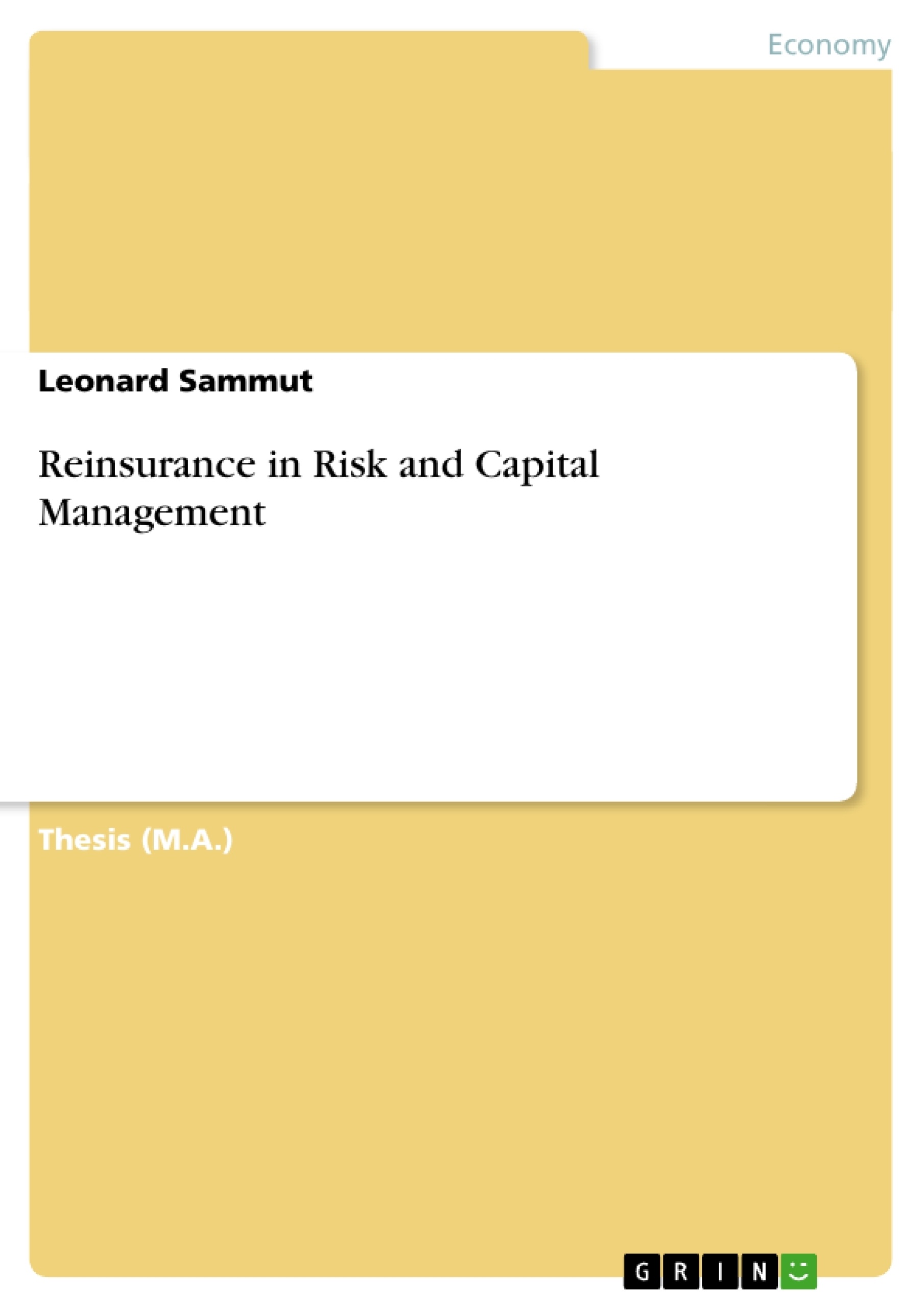Widely advertised corporate failures and the European Commission’s Solvency II initiative are exerting pressure on insurers worldwide to improve their risk and capital management capabilities and to adopt a unified and integrated approach towards the management of their risk profile and capital base. Against the backdrop of these developments, the study focuses on one of the fundamental risk and capital management tools available to insurance companies worldwide, namely reinsurance. The objective is to evaluate reinsurance within the risk and capital management structures and processes of Maltese insurance providers writing general business of insurance.
Inhaltsverzeichnis (Table of Contents)
- Introduction
- Background Information
- Relevance of Study
- Research Objective
- Scope and Limitations
- Dissertation Overview
- Literature Review - Principles of Risk and Capital Management
- Introduction
- The Concept of 'Economic Capital'
- Economic Capital and Regulatory Capital
- Solvency II - A Risk-Based Capital Framework
- Economic Capital in Enterprise-wide Risk Management (ERM)
- The Benefits of ERM
- The Other Side of the Coin
- Conclusion
Zielsetzung und Themenschwerpunkte (Objectives and Key Themes)
This dissertation aims to evaluate the role of reinsurance within the risk and capital management structures and processes of Maltese insurance companies writing general business of insurance. It seeks to understand the implications of reinsurance on the company's risk exposure and capital requirements, considering the theoretical framework of Enterprise-wide Risk Management (ERM) and the upcoming Solvency II regulations.- The concept of economic capital and its role in ERM
- The benefits and risks of reinsurance within the ERM framework
- The impact of reinsurance on the aggregate net risk exposure and risk-based capital of Maltese insurance companies
- The challenges faced by local insurance companies in understanding and implementing reinsurance strategies
- The need for improved ERM practices and regulatory initiatives to enhance reinsurance management in Malta
Zusammenfassung der Kapitel (Chapter Summaries)
- Introduction: This chapter provides background information on the study, outlining its relevance, objectives, scope, and limitations. It also offers a brief overview of the dissertation's structure.
- Literature Review - Principles of Risk and Capital Management: This chapter explores the fundamental principles of risk and capital management, introducing the concept of economic capital as the cornerstone of Enterprise-wide Risk Management (ERM). It discusses the relationship between economic capital and regulatory capital, particularly in the context of the upcoming Solvency II regulations. This chapter also examines the benefits and challenges of implementing ERM, highlighting the importance of a robust reinsurance management strategy.
Schlüsselwörter (Keywords)
The primary focus of this dissertation is on reinsurance as a risk and capital management tool for Maltese insurance companies. It investigates key concepts such as risk transfer, risk management, capital management, economic capital, Enterprise-wide Risk Management (ERM), and the regulatory framework of Solvency II. This research examines the implications of reinsurance on risk exposure and capital requirements within the context of Maltese insurance companies, highlighting the importance of a comprehensive ERM approach.- Quote paper
- Leonard Sammut (Author), 2008, Reinsurance in Risk and Capital Management, Munich, GRIN Verlag, https://www.grin.com/document/134780



